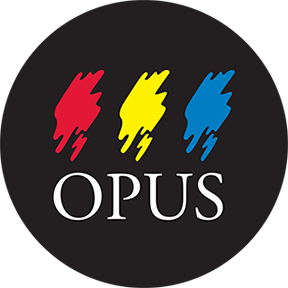Opus Art supplies has established itself as a leading retailer and producer of Art Supplies in Vancouver and across British Columbia. In Vancouver, the store has become ubiquitous among the art community (speaking confidently from experience as a member of this community).
Opus’s business and marketing practices provide a fine demonstration of how a business can foster brand identity and credibility by tying its products and services into a larger cultural context. This article highlights the numerous ways in which Opus increases its online credibility and how this may translate in sales for its company.
Content Marking – Being Culturally and Socially Relevant:
While perusing through the company’s online resources I found myself quite distracted at times with various articles and videos which happened to catch my interest. This is of course can largely be attributed to my own personal investment into art; but also, I would argue, to the easy readability and accessibility of the site. What I want to highlight here however, is targeted and optimized content – not web design.
Rather than just use its online resources to merely inform customers of product sales and promotions (and they certainly do), Opus produces content that appeals to the aesthetic, creative, emotional and intellectual investments of its customers. The company is very committed to community engagement. Opus regularly hosts store demos with a wide variety of different artists at its various locations across British Columbia. Announcements and write ups for the demos are posted on the website. The demos help to establish the store as a cultural and social hub for artists to share ideas and practices with one another.
Although the store makes its money through products and services, the company still works a great deal to highlight the social and educational benefits it provides for its customers. The website also promotes Art related workshops by other associations – taking advantage of another opportunity for community engagement. Another strong feature of Opus’s online content is the ‘ How to videos’ section on its website. This section does the job of both connecting with relevant and influential members in the community as well as furthering the brand’s educational imperative.
The Opus Website also includes an ‘ Art and Community News’ section. This section includes relevant and regularly updated news concerning the art community at large as well as an opinion column by Chris Tyrell: Artist, Writer and Emily Carr Instructor. Also housed within this section is ‘ Art News,’ an area in which visitors to the site are free to submit announcements of upcoming art related events. By providing an added layer of interactivity to the website, Opus is able to attract and become affiliated with some of the more active and valuable members of the community.
Social Media Integration:
Opus is represented on Facebook, Twitter and Youtube. Opus’s Social Media approach has been specifically tailored to drive referral traffic back to the company website. Of the Social media networks being used by Opus, I see Twitter working the most effectively for them. This is not due to Twitter being superior in this case to any of the other networks, it is simply a result of the way Opus is using it. Opus has more followers on Twitter than fans on Facebook (add to this the fact that Twitter followers are generally ranked higher in terms of customer loyalty than Facebook Fans); this isn’t surprising given that the company is much more active on Twitter. Also, the pertinent information which Opus seeks to communicate to its customers seems to be better suited to the microblogging platform.
The store has a continuous stream of events and product sales which it fights to make known to its subscribers. In fact, one other way in which the company conducts this fight is by sending a regular email newsletter to its customers.
As can be seen in the screenshot below, the newsletter email is optimized so as to lead potential customers back to the online store or onwards to additional content. I personally have been receiving this newsletter for some time; they arrive in my inbox with surprising frequency and I have yet to unsubscribe, I think that says something. After going through the Granville Island store countless times in the past few years, the diligence with which the employees there continue to ask me if I am subscribed to their newsletter continues to surprise and amuse me.

The key to Opus’s Social Media strategy is overall integration between the platforms and the company website. The How to and Demo videos featured on the website are embedded Youtube videos, so of course, **Opus has a YouTube Channel, though I suspect this is a relatively recent endeavor since as of this moment their activity and impact there is still underdeveloped.
Opus faces the challenge of balancing emotional and cultural appeals versus promoting sales. The brand must fight to hold on the customer’s attention without driving them away due to a perceived neediness or material callousness. This of course goes back to the content marketing strategies outlined in the previous section and the 80 – 20 rule of online marketing which Opus seems to follow with great diligence.
In conclusion, Opus stands as an example of how an art supplies dealer, and really any kind of retailer, can benefit by using online and social media marketing to reach out to a community.
Setting up a comprehensive social media promotions campaign has never been easier. Take a look at Wishpond’s social media promotions today and see for yourself!

